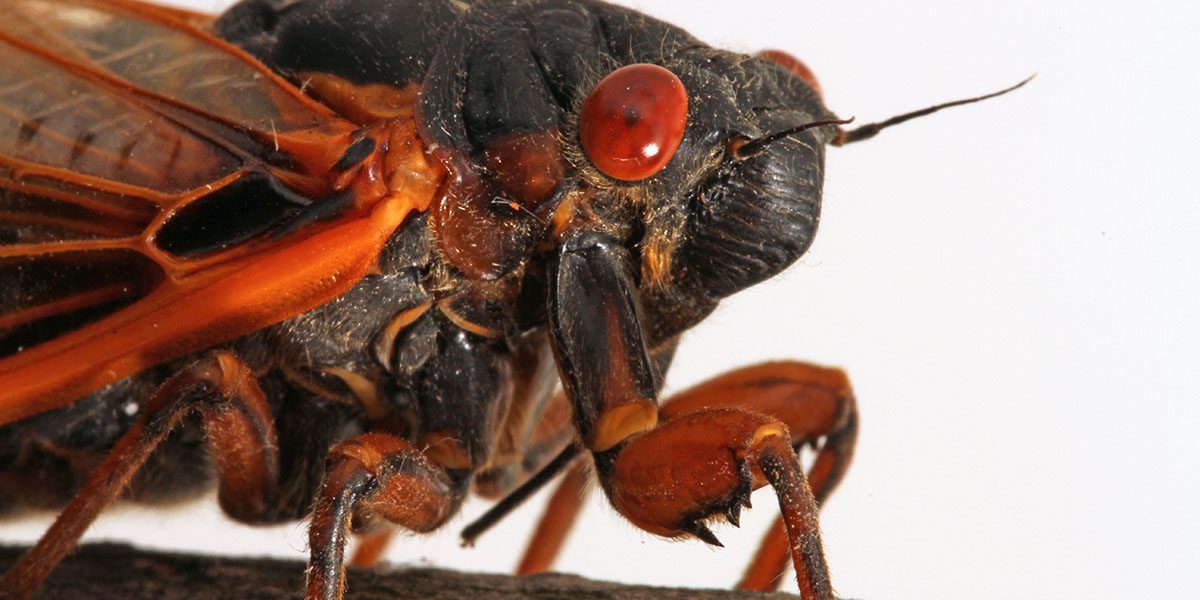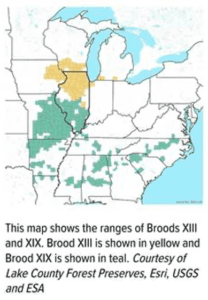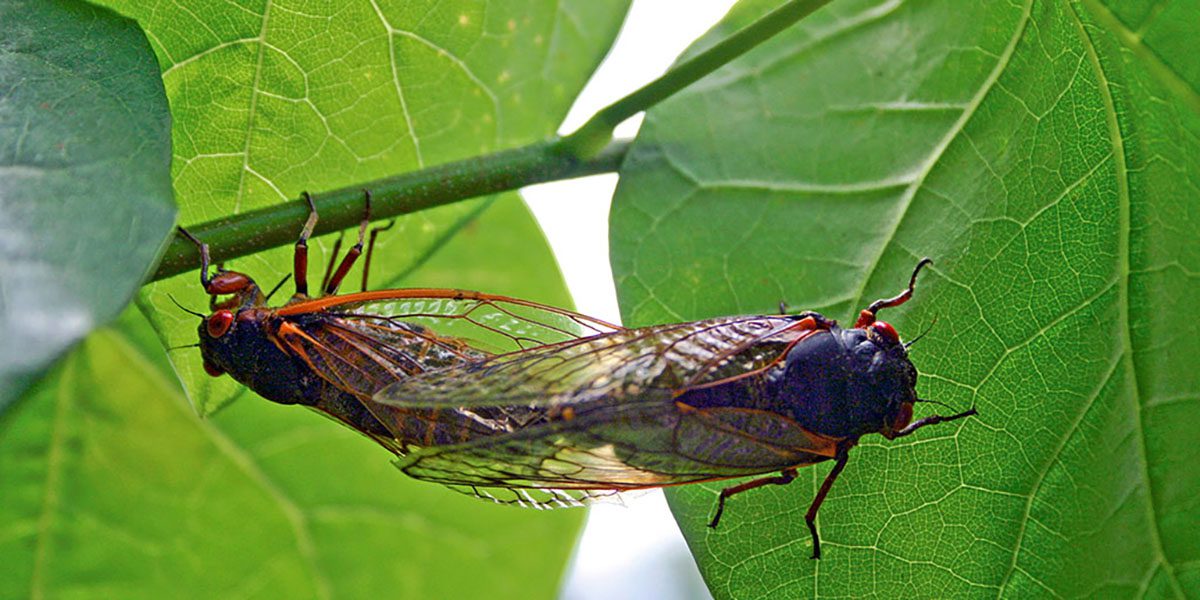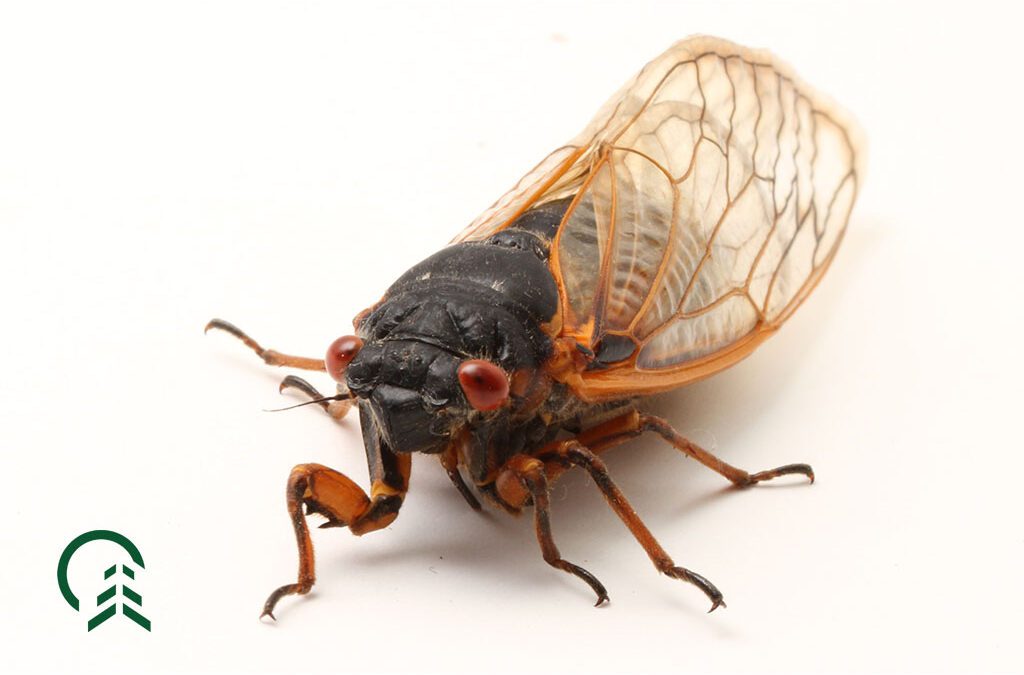For the first time since 1803, the simultaneous emergence of both the 13-year and 17-year cicada will happen in the spring of 2024. This will not occur again until 2245. Maybe the Bears will have finally won Super Bowl by then??? However, with this anticipation comes anxiety and worry regarding what will actually happen in the next few months.
According to the EPA, cicadas are not harmful to people, pets or even household gardens or crops and they do not sting or bite. If that’s the case, why does every article or story we see have a headline that frightens Midwesterners into thinking the cicada Armageddon is on its way? Platt Hill Nursery would like to take this opportunity to discuss realistic expectations of what this spring will be like with our rarely-seen winged friends.

First, it’s important to know that the ‘periodical cicadas’ emerging in Spring are not the same cicadas we see annually; often called ‘dog day’ cicadas which emerge in July or August. The two spring broods in question are known as Brood XII (which consists of three 17-year cicada species) and Brood XIX (which consists of four 13-year cicada species).
Additionally, these periodical cicadas require 13 to 17-years of continuous feeding on the roots of the same tree to complete a single generation.
 As the map (left) shows, the 17-year cicadas are based primarily in the northern part of the state; around I-74 and north; the 13-year cicadas are based in the southern part of the state; about I-74 and south.
As the map (left) shows, the 17-year cicadas are based primarily in the northern part of the state; around I-74 and north; the 13-year cicadas are based in the southern part of the state; about I-74 and south.
Although both broods may emerge around the same time, their ranges don’t significantly overlap outside of a few counties in central Illinois. Moreover, cicadas do not migrate very far; they only fly about a half-mile at most so their territory expands very slowly. According to recent studies, it’s estimated that the broods have only moved about 5 miles or less since they first emerged in our area. This also means cicada density WILL NOT result in extreme or double-densities so cicada emergence will likely appear normal for large portions of our area.
Contrary to popular belief, the dual emergence of the 13-year and 17-year broods may emerge at the same time this spring, but Brood XII & XIX will NOT overlap when it comes to location.
OK, so we know that the 17-year cicada will emerge in the Chicagoland area this spring, but how many cicadas will there be in our area? Well, a lot has changed in our area since Brood XII went underground 17 years ago.
“Realize that these insects require a steady supply of sap-supplying tree and shrub roots for 17 years. Housing developments that have had all trees and shrubs removed prior to building will have few cicadas because the nymphs died when the trees were removed. Similarly, housing developments in areas that were originally farm fields or prairie will have few cicadas due to the original lack of trees. The practice of bulldozing all trees off of a housing development site has been common only since the 1960s, so older housing developments tend to have large numbers of cicadas.” – University of Illinois Extension.
As you can see, urban development and expansion in our area has played a significant role in limiting the number of cicadas in the broods. Even if the cicadas did survive in-ground for 17-years during housing developments and business construction, the last time we checked, cicadas cannot burrow through concrete or asphalt.
Therefore, the big questions everyone is asking is, “What sort of plant damage can we expect?”
After speaking with several Midwest tree & shrub growers, tree care companies and arborists, the amount of damage to plants in our area is anticipated to be very minimal. Catherine Dana, a cicada expert with the Illinois Natural History Survey at the University of Illinois at Urbana-Champaign says that other than the noise, the biggest impacts from cicadas are soil aeration from the insects burrowing out of the ground and some minor damage to plants as they feed. “They have a straw-like proboscis, so all they’re doing is drinking some plant juices. They really don’t do much damage to the plants themselves.”

The bulk of plant damage is not caused by feeding, but by female cicada ovipositing (laying of eggs). Female cicadas cut small V-shaped slits and lay their eggs in half-inch inch to one-and-a-half-inch young branches of trees. It is believed that young fruit and ornamental trees may be the most susceptible to cicada injury during ovipositing, but those trees are actually not the favorite hangout spots for cicadas; maples, oaks and willows are much more preferred. However, cicadas are opportunistic feeders and will most likely be attracted to whatever large plant is nearby the nymphs’ underground habitat.
The U of I Extension says, “Cicada damage does not impact well-established healthy trees. Most areas do not see heavy populations of periodical cicadas and do not require tree protection.” So, rarely will periodical cicada feeding or egg-laying harm a tree. Random, small branches of young trees may slightly die back, but healthy and large-diameter branches are easily able to heal small slits in their bark. Additionally, the small amount of damage we could see this spring will happen during a time when trees are actively growing and setting new buds and leaves. Any damage that does occur will quickly be fixed and mended by the trees.
Platt Hill Nursery will continue to sell and install plant material as normal this spring.
However, if you wish to cover your small or young trees this spring, you can use frost cloth or burlap, but because the cicadas will be around for 4-6 weeks, bird netting is the preferred method of protection since it allows plenty of sunlight and air movement to your plants. Use smaller 1/4-inch bird netting since the cicadas will have a more difficult time getting through the small opening.
Platt Hill Nursery is Chicago’s premier garden center and nursery.


